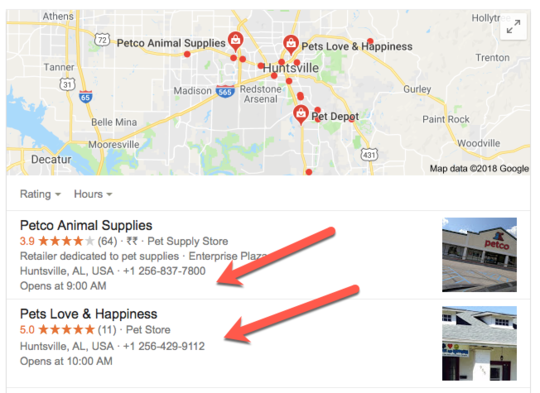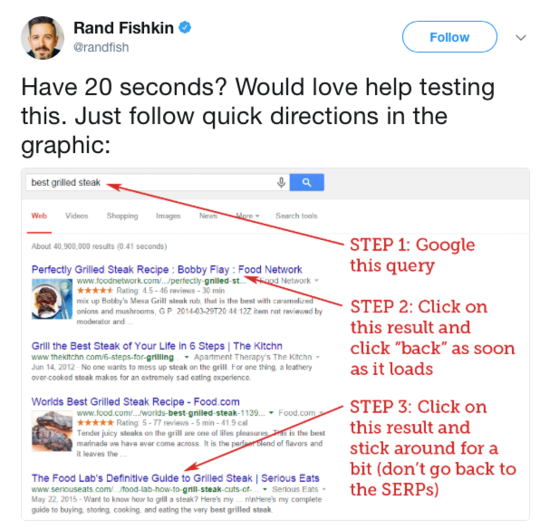7 SEO Strategies Still Valid in 2018
The most challenging aspect of any search engine optimization strategy is staying current. The Google gods are indeed fickle masters: every year, the headquarters in California roll out more than 500 changes to their search algorithm (Moz).
To help you stay current with the latest search engine trends, I've aggregated and analyzed seven SEO strategies that remain valid in 2018. We'll discuss each strategy in-depth, and teach you how to implement it most effectively.
1. Long-tail Focus
Long-tail keywords started becoming an increasingly important part of search engine strategy in years past, and today they're still as relevant as ever.
If you're unfamiliar with the term, here's a quick refresher: long-tail keywords are search queries that are much more specific than the typical query most people Google.
For instance, "pet training" is a short, general, high-traffic search query. However, the long-tail keyword "st bernard handshake training" is longer, much more specific, and low-traffic.

Because the second (long-tail) keyword has a much lower search volume, it's also far less competitive. Thus, it's a much easier keyword to rank for. Additionally, since it attracts a very specific kind of audience (pet owners trying to develop a training schedule for their puppies), the traffic the keyword attracts could also be more targeted toward your product/service and consequently higher-converting.
2. Voice Search Optimization
Since 2008, voice searches on Google have increased by a factor of 35x (Search Engine Watch). And that trend is forecasted to only continue--in fact, comSore estimates that by 2020, half of all queries will be voice searches.
To properly optimize for voice search, consider the context in which most voice searches will happen. For instance, many voice searches occur on mobile. Imagine a scenario where a user is driving and needs to find the closest pet store to him/her. The natural thing to do would be to pick up the phone and voice search "pet stores near me."
If you run a brick-and-mortar business, this trend tells you that location SEO and ensuring that all of your snippet details are correct (as in the image above) will become increasingly important.
But even if you don't have a physical location, voice search optimization still carries implications for your overall SEO strategy. Remember that when people voice search, they use phrases closer to conversational language: that means the use of extra prepositions and filler words, resulting in generally longer search phrases.
This goes back to the emphasis on long-tail keywords, reinforcing the importance of long-tail to your SEO strategy.
3. Lock-Down Security
Back in 2014, Google's Webmaster blog announced that that the use of HTTPS to secure a website had officially become a ranking signal and an element in the search algorithm. In other words, secure sites rank better.
Since then, the number of webmasters adopting the HTTPS protocol has skyrocketed. Search Engine Land estimates that nearly two-thirds of domains ranking in the top three positions of search results now use HTTPS.
The use of the HTTPS protocol has benefits outside of SEO, too. Besides the obvious addition layer of security, HTTPS is a recognizable signal of security to your website traffic. Knowing that your site is well locked down, your traffic will be more likely to convert and purchase your product/service.
4. Blazing Page Load Speeds
Page load speed remains an essential ranking signal in 2018, since it was officially announced as one nearly eight years ago in 2010.
The importance of load speed within Google's search algorithm was reinforced this past year as well, when Google revealed that it aims to include page speed in the mobile first index.
If you haven't heard of it, the mobile first index is essentially Google's search rankings based on the mobile versions of the websites, rather than on the desktop version. At current, Google uses the load speed of desktop versions of websites as a ranking signal, as it hasn't yet incorporated speed testing of the mobile version into its algorithm.
SEMLand reports that Google plans to integrate load speed of mobile versions into its mobile first index algorithm soon. To ensure that your website maintains high rankings on mobile searches, you need to certify that both the desktop and mobile versions load lightning fast.
You can use a tool like Dareboost or Google's Page Speed Tool to test load times of both mobile and desktop versions of your website.
5. Google Answer Boxes
Google Answer Boxes are a type of featured snippet that appear beneath the search bar and above the standard listings for certain queries. See an example below:
Answer boxes are a relatively recent addition to Google's search capabilities, so optimizing your website to achieve this coveted location is still an evolving process.
Contrary to what might seem to be the obvious path, Google doesn't simply pull content for the answer box from the first result in the SERPs. In fact, it pulls content from any one of the listings on the first page--so you just need to get to the first page for a shot at getting into answer box territory.
Format is crucial here: having a numbered or bullet-point list (like in the example above) or table can be the one element the algorithm looks for to catapult you into the answer box. Another essential component is a logical answer to the query within the text of the page.
Image credit: Search Engine Watch
For instance, in the example above, the answer box identifies a result that contains a straightforward, accurate answer to the search query. When trying to rank for queries in a similar style, you'll need to have at least one instance of such an answer on the page.
6. Quality over Quantity
The familiar adage of quality over quantity is never truer than in the digital marketing arena. The Internet is already bursting with content--the big four of content storage service (Google, Amazon, Microsoft, and Facebook) alone contain 1,200 petabytes of data, or 1,200 billion gigabytes. And that's just those four providers.
Clearly, creating content simply for the sake of owning content is useless when there's already such a massive ocean of data for your work to get lost in. Instead, take more time to create less content of a higher calibre--the kind of content that users will actually find helpful and want to consume.
Rand Fishkin (formerly) of Moz ran an unusual experiment confirming the necessity of quality content to solid SEO. He tweeted out the below instructions to his huge following (which numbers in the hundreds of thousands).
In just over an hour, Google sensed the increased user engagement on the third link, and moved it up the first spot.
Google uses such analytics as bounce rate and time on-site to assess the quality of a piece of content. The higher the quality of your content and more engaged your users are, the better you'll rank.
7. Mobile Optimization
You've been hearing this for years, and in 2018 you'll only hear it again. Mobile is king.
In 2016, almost 60% of all search queries were done on mobile (Search Engine Land). And in 2017, the continued rise of mobile was confirmed when comScore discovered that 69% of digital media consumption is on smaller devices.
Simply put, mobile search isn't going anywhere. On the contrary, it's taking over from desktop in many industries, especially ones that rely on location-based search.
Make sure your website is mobile-optimized and as engaging and easy to navigate on smaller devices as it is on a desktop. Configure AMP on your website, and ensure that the mobile version of your content loads lightning fast.
Wrapping Up
With all the difficulty of keeping up with Google's stringent ranking standards, as well as the continued emergence of new ways people find information online (such as mobile apps and social traffic), some have conjectured that SEO is dead.
But it's not. Google still gets over 5.5 billion searches per day. And three of the top four websites in the world in terms of traffic--Google, YouTube, Facebook and the Chinese website Baidu--are some kind of search engine (WebsiteSetup).
Thus, even in 2018, SEO is still very much worth the time and effort required to learn and apply the constantly-evolving optimization techniques. With this guide, you should be well set to make this year the best year you've ever had in terms of organic search traffic.
This guest article was written by Ryan Gould, VP of Strategy and Marketing Services at Elevation Marketing.







